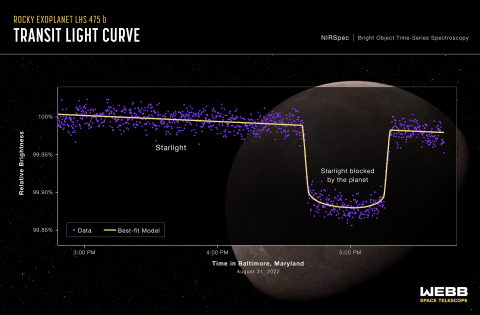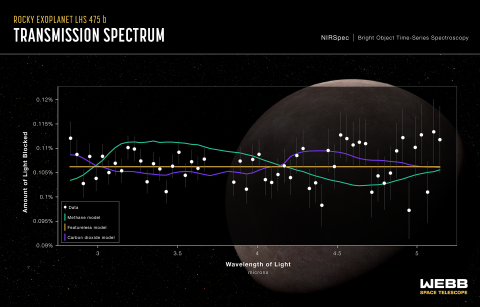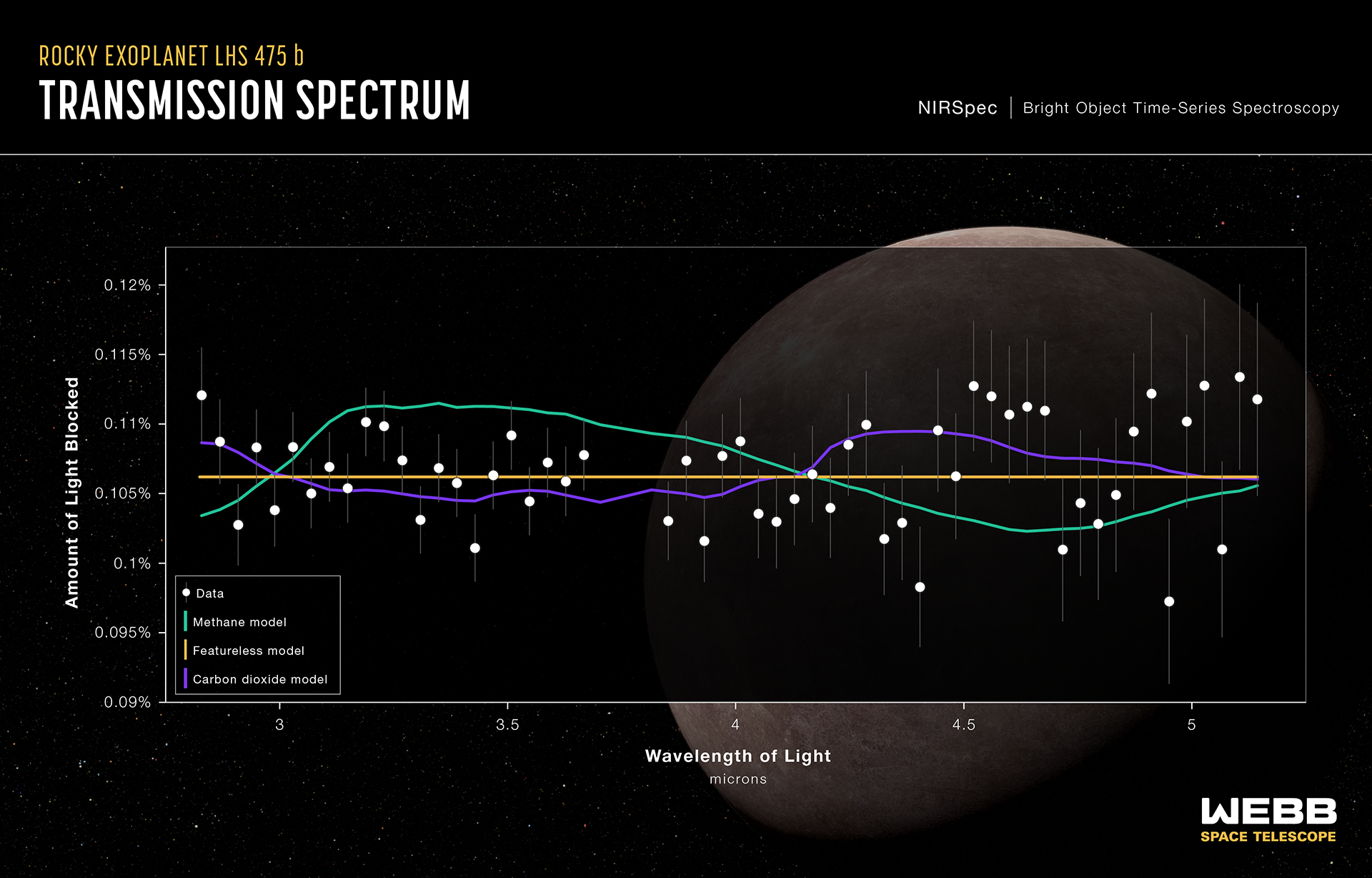Discovery of a planet very similar in size to Earth
A research team led by Dr. Kevin Stevenson and Dr. Jacob Lustig-Yaeger from the Institute for Applied Physics at Johns Hopkins University announced Wednesday, January 11, 2023, at the American Astronomical Society (ASSO) AAS) held a press conference and announced unique results. This was the result of the observation of the exoplanet LHS 475 b through the James Webb Space Telescope, and when the results were released, astronomers and the public were surprised.
Until now, several exoplanets have been discovered that have a very similar size or temperature to Earth, but the above planet is a rocky planet similar to Earth and even the size is almost the same as Earth. However, the above planet orbits its parent star very closely, so it is a planet that orbits the star once in two days.
Artist’s rendering of LHS 475 b orbiting the red dwarf star LHS 475 only 41 light-years away in the constellation Octans © NASA, ESA, CSA, Leah Hustak (STScI)
Following the research team’s suggestion, the James Webb Space Telescope, which observed celestial objects, began observing the red dwarf star LHS 475, which is only 41 light-years away from Earth. They also identified a rocky exoplanet (LHS 475 b) orbiting the above star, which was analyzed and found to be 99% the diameter of Earth.
Could the planet have no atmosphere?
In addition, the research team’s analysis of the results revealed that the above planet exhibits very unusual characteristics. It is a rocky terrestrial planet, and it has been discovered that it may not have an atmosphere. The existence of the above planet was first predicted through the results of the Transiting Exoplanet Survey Satellite (TESS) telescope, which has been observing the planet since 2018.
After carefully examining the results of TESS, the research team thought it would be very interesting to observe the above planet with the James Webb Space Telescope. And James Webb’s Near Infrared Spectrometer (NIRSpec) easily and clearly captured the above planet in just two transit observations. (see high resolution photos)

When a planet passes its parent star, it accurately detects the decrease in brightness and announces the existence of the planet. ⓒ NASA, ESA, CSA, Leah Hustak (STScI), Kevin B. Stevenson (APL), Jacob A. Lustig-Yaeger (APL), Erin M. May (APL), Guangwei Fu (JHU), Sarah E. Moran ( University of Arizona)
As a result of the observation, the TESS observation was accurate, and the secondary verification of the existence of the planet was completed. James Webb is currently the only telescope capable of observing the atmospheres of small, rocky exoplanets the size of Earth. Thus, detailed exploration of exoplanets and their atmospheres is only just beginning.
Planetary atmospheric constituents in any combination
The research team accurately captured the time when the planet passed in front of the parent star and took a spectrum, and began analyzing the atmosphere through the above results. However, no precise conclusions have yet been reached as to what is in the planet’s atmosphere. According to the above results, the planet may not have an atmosphere, but it may be the result of an atmosphere that can be explained by various combinations.
In this regard, James Webb’s results are so beautiful, says Dr. Erin May of the same team, that highly sensitive telescopes can easily detect a variety of molecules, so it is not yet possible to draw precise conclusions about what materials are in the planet’s atmosphere. did.

The planet may not have an atmosphere, but it weighs more on the possibility that there are several possibilities. It could be, for example, a planet with a carbon dioxide atmosphere, such as Venus. ⓒ NASA, ESA, CSA, Leah Hustak (STScI), Kevin B. Stevenson (APL), Jacob A. Lustig-Yaeger (APL), Erin M. May (APL), Guangwei Fu (JHU), Sarah E. Moran ( University of Arizona)
However, the research team explained that while they couldn’t determine what was in the atmosphere of the planet LHS 475 b, they could explain what wasn’t there. It cannot have some of the atmospheres that rocky planets can have, nor can it have a thick methane atmosphere similar to Saturn’s moon Titan.
However, the team explained that it could be taking the form of an atmosphere, such as a pure carbon dioxide atmosphere. Because, counterintuitively, if it consists of a 100% carbon dioxide atmosphere, it becomes very difficult to detect. Much more accurate measurements are needed to confirm this. To this end, the research team is expected to conduct additional observations of the same planet this summer.
Possibly a planet like Venus
James Webb’s team and his team explain that the temperature is hundreds of degrees higher than Earth because the planet orbits its parent star on a much closer orbit than Earth, and if clouds are detected on the planet above, it can be concluded that it contains carbon dioxide. did. If the above hypothesis is confirmed, it is thought that the planet has properties similar to those of Venus obscured by thick clouds. The team puts more weight on the fact that the planet orbits its parent star in a very close orbit, but given that the parent star is a dark, cold M-class star, it can still have a suitable atmosphere.
The research team’s discovery is significant in that it opens up the confidence and possibility that the James Webb Space Telescope can pinpoint Earth-sized planets orbiting red dwarf stars smaller than the sun. Dr. Stevenson, who led the research, said that this was just the beginning and that the identification of rocky planets was possible due to James Webb’s accuracy. Dr. Rustick-Jaeger agrees, arguing that the James Webb Space Telescope has ushered in a new era of discovery of rocky planets.
(22)

